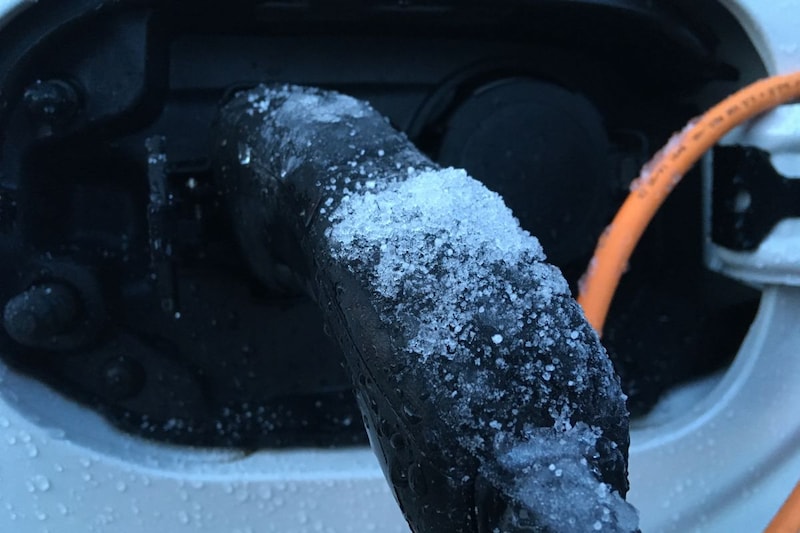
The battery of an electric car hates the cold! You won’t get as far with it at low temperatures. And that can make a lot of difference! Why is the range shorter at low temperatures?
An electric car draws energy from the battery. It works best at temperatures that we ourselves also find comfortable. So between 15 and 25 degrees Celsius. If it gets warmer, because of the sun but also because of frequent fast charging, the capacity of the battery will decrease permanently. Therefore, the battery often has to be cooled when charging with a fast charger. That is important for longevity.
Less action radius at low temperatures
However, when it gets colder, it’s not good either. Then the chemical processes in the battery run slower. This results in less energy and therefore the range decreases at low temperatures. That could be just 10 percent. That is about 30 kilometers for many cars. That usually works out fine, but it is something to take into account, especially if you drive longer distances in a day.
Tips for more range
Low temperatures therefore have a negative effect on the range of your electric car. Although there are nowadays cars with a heated battery pack and that impact is therefore somewhat reduced, that heating has to come from somewhere and it therefore also costs energy to keep your battery pack at the right temperature. Apart from such a heated battery pack, you can follow these tips yourself to increase the range even in the cold.
- Use the seat heating – Heating the air in a car is not efficient and especially if you already have to take it easy with that heating, using the seat heating is a better idea. Seat heating heats up very quickly and is in direct contact with your body, so that you warm up faster yourself.
- Use the preheating – Many electric cars can be pre-programmed to be fully warmed up at a certain time. By setting a departure time, your car will already heat up while it is still plugged in. And so you leave with a warm, full battery and a pleasant interior. The windows will then also be free of ice.
- Turn off the rear window defogger. Only use it if there is steam on the glass. Tip: if you treat the window with an anti-fog cloth, you probably need the rear window heating even less.
- Keep your car plugged in – If we are talking about the plug; make sure your car is plugged in all night. Then you leave every morning with a full battery.
- Prepare well – Do you want to go for a long drive with your electric car in the freezing cold? Make sure you are well prepared, especially if you go to winter sports countries. Find out the approximate range of your car in these circumstances and know where the charging points are on the way. If you have all this in mind, you can set off without any worries.
- Make sure you have a charge card in the car. Even if you usually only charge at home. Especially when it’s colder you may need it on the road. After all, you may want to charge extra at your destination at a public charging station or on the road at a fast charger.
- Drive at a moderate speed. So also in the evening 100 km/h instead of 130 km/h. You will be amazed at how little extra time this will take!
- Use the B position of the transmission. This allows you to brake more on the engine and recover energy. This also makes your battery last longer.
- Use the cruise control. Driving at a regular speed is more economical. The cruise control is made to do that optimally.
- Anticipate while driving. Looking ahead makes it easier for you to see in front of you when people slow down or if something is coming your way. Then you can let go of the gas earlier and drive more regularly.
- Leave unnecessary luggage at home. Extra weight has to get going and that costs extra power. So, for example, just clean up those bags of potting soil!
- Pay attention to the tire pressure. If the tires are too soft, it takes more energy to drive and the range is also reduced at low temperatures. Measure the tire pressure regularly. Keep the tire pressure recommended by the car manufacturer.
– Thanks for information from Autoweek.nl